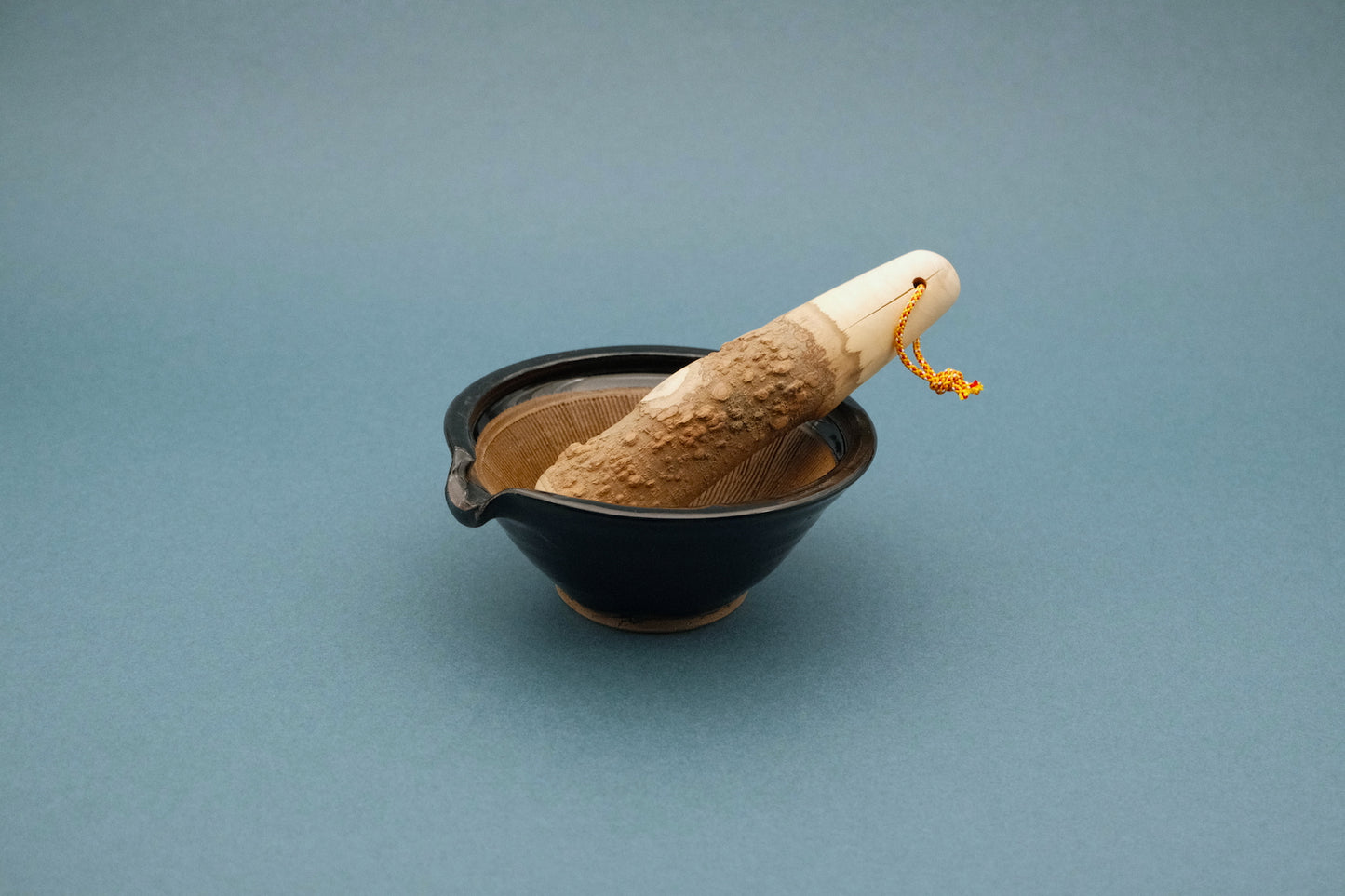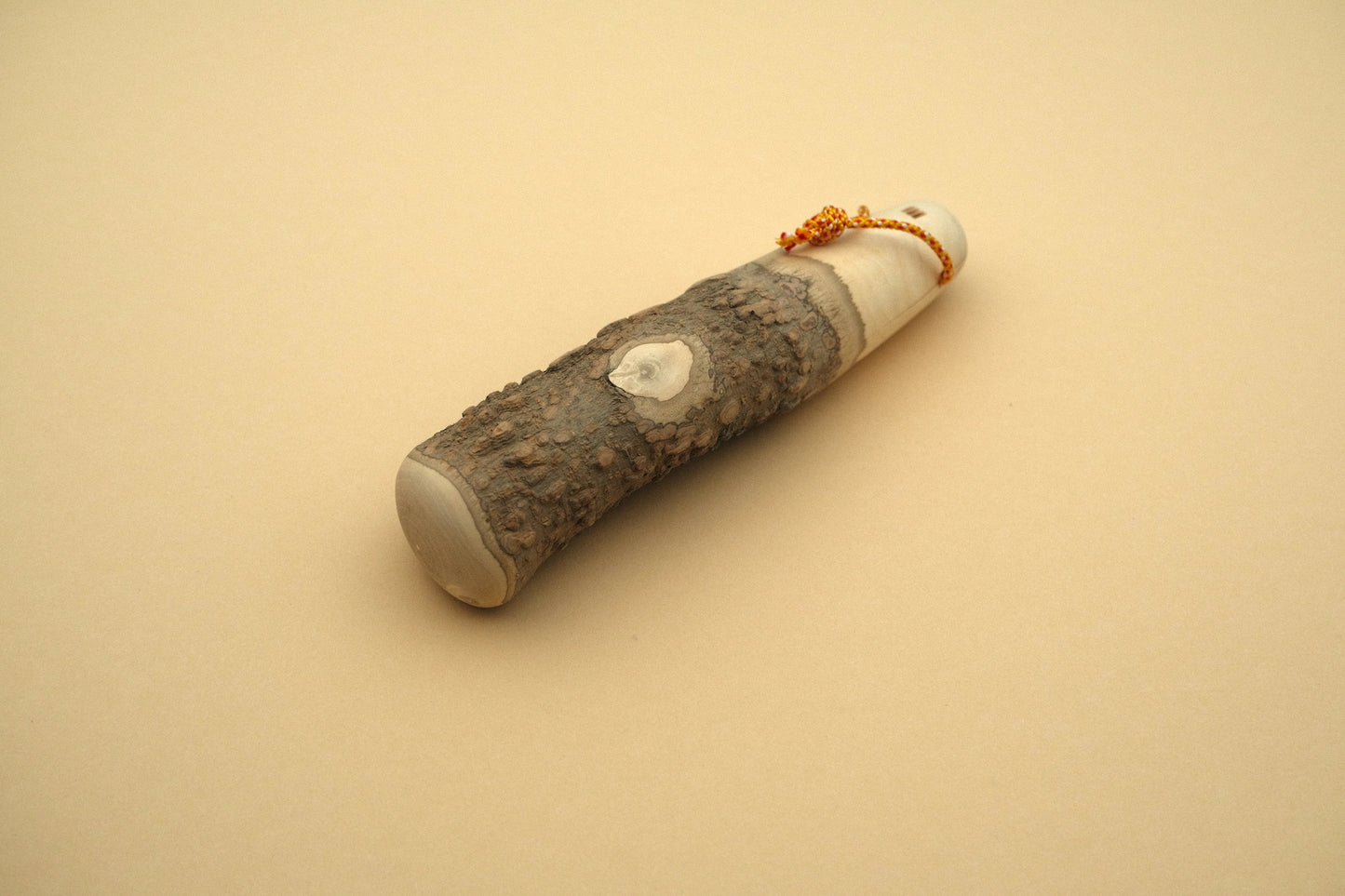Azmaya
Azmaya 15 cm Igayaki suribachi mortar and surikogi pestle made of sancho wood
Azmaya 15 cm Igayaki suribachi mortar and surikogi pestle made of sancho wood
Couldn't load pickup availability
The suribachi, a Japanese mortar, is designed with ridges on the inside for more effective grinding and a spout for pouring liquids. Made from beautifully glazed Iga clay, it's not only a tool for grinding, but also a perfect serving vessel. You could grind a sesame dressing in a large bowl, and add other ingredients to dress and serve straight away. You could grind a sauce or dressing in a smaller suribashi and pour it from the spout table side.
To grind ingredients in a suribachi you would need a surikogi pestle. Sansho is extremely hard and resistant to abrasion, so it has been used as a pestle wood for a long time. Shimizu, where the Arida River flows from Mt. Koya, is blessed with a rich natural environment and is one of Japan's leading producers of sansho. This surikogi is made from Shimizu's Japanese pepper tree, which no longer bears fruit. Utilizing high-quality materials, it has been designed to fit comfortably in your hand and against the mortar. Our surikogi is quite thick for Japanese standards. Therefor it works well for any type of cuisine.
The suribachi is made at the Kōbō kiln in Iga, Mie prefecture. The surikogi is made at Shimizu Manufacturing in Shimizu, Wakayama prefecture, with its silken hanging string threaded by Showen Kumihimo in Uji, Kyoto Prefecture, Japan.
Mind that cracks may occur due to the nature of sancho wood. It's not a defect and contributes to the rustic aesthetic of the surikogi.
The Iga region of Mie Prefecture has been known as the home of pottery since ancient times. Iga ware, born from the rich soil nurtured by time and burning fire, is a pottery that delights with its simple earthy texture.
Although the inside of the suribashi is glazed, it would be best to seal your Iga ware.
Wash some Japanese short grain (koshihikari) rice in water until the water turns milky white. Sieve out the rice and use for diner. Immerse your bowl in the rice water, simmer for about 10 minutes and let cool to a temperature that's comfortable to handle. Wipe the slimy surface and let it dry naturally.
After drying, wash again with water and dry thoroughly.
This process seals the porous surface with starch, making it difficult for dirt and odors to stick to them. Please note that the small cracks that are visible on the inside and outside of the vessel are naturally occurring due to the nature of Iga soil, and do not pose a problem for use.
Hand wash and dry thoroughly after use.
Share








